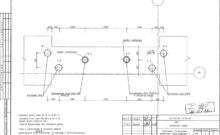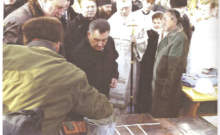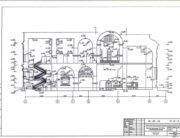At the time of the 1998 survey of the Assumption Cathedral, the remains of the ancient structure were not re-maintained. The south-eastern part of the Assumption Cathedral is the most preserved, with the church of John the Theologian almost intact, as well as the partially preserved southern, central and northern apses. The walls of the cathedral, the pillars, the remains of the floor, the paintings have survived in small fragments. The general condition of the remains of the ancient structure was in emergency. Since almost the entire surface of the remaining remains was in the open air and did not have proper conservation protection, this led to significant damage to the surface of the masonry. The plaster layers on most of the preserved walls had losses from 20 to 90-100% of the plaster area, the exposed masonry underwent severe weathering: the depth of the surface destruction reached 2-2.5 cm, while the seams of the masonry were cracked, the masonry mortar was partially lost. In many areas of the remnants of the ancient structure (apses, some walls) there were significant losses of masonry material – plinths, stone, mortar, and the depth of the losses was up to 30-40 cm. Often there were cracks in the remains of the old masonry (for example, in the southern wall) had a width of opening up to 5 cm. A crack was also observed at the junction of St. John the Theologian Chapel in the southern apse.
It was also recorded damage to the ancient layer Tinki, cracks pierced it almost everywhere, layers of pofarbuvan coiled, old stucco had a lot of lost parts, chips. Separate sections of walls with high humidity (wet from precipitation, moisture suction from the soil) were affected by biofouling, the construction of the efflorescence was recorded.
The ruins were painted with galvanized steel, in some places the steel was corrosive, and some letters were lost altogether. The metal support beams were unpainted and corroded.



















